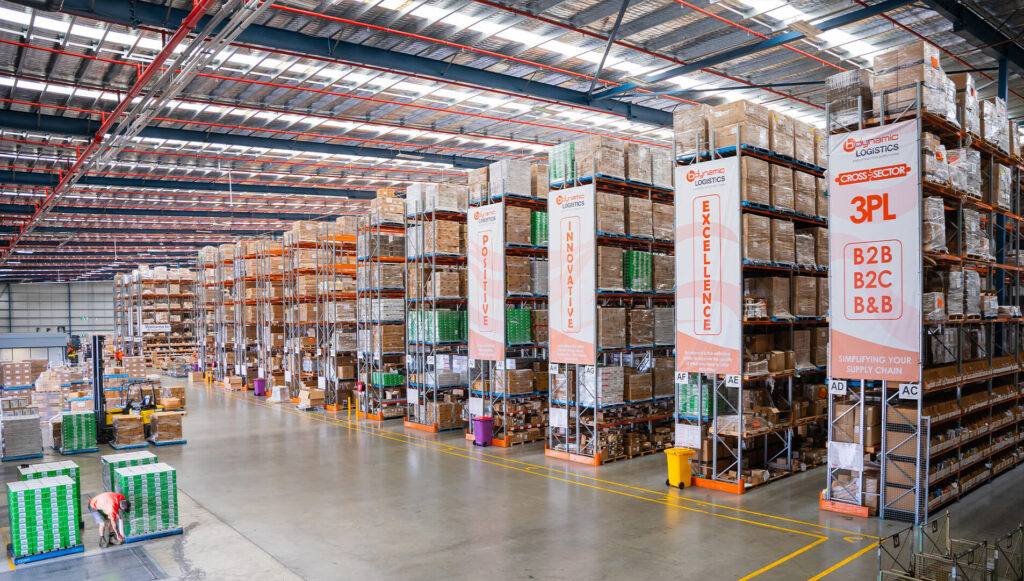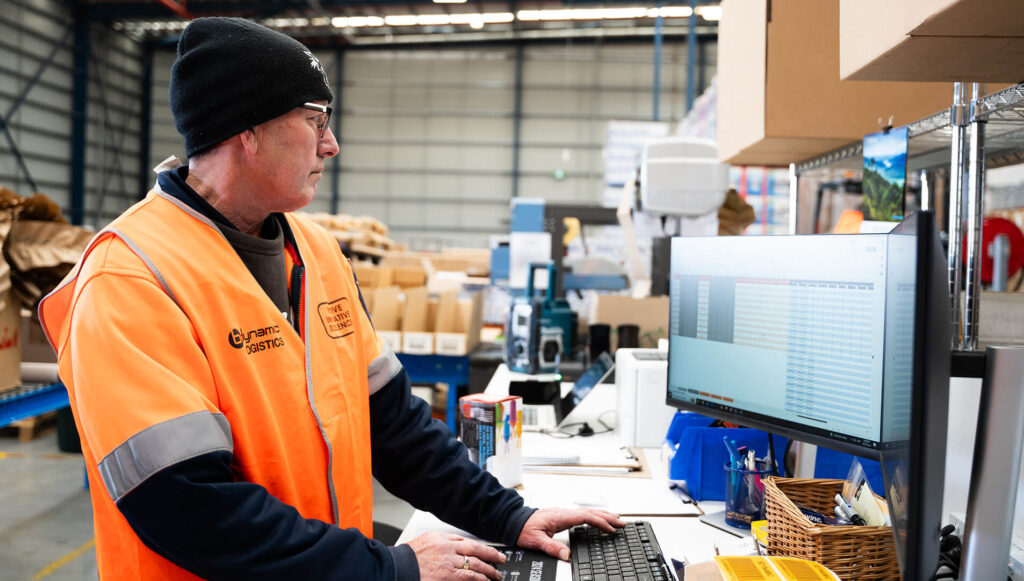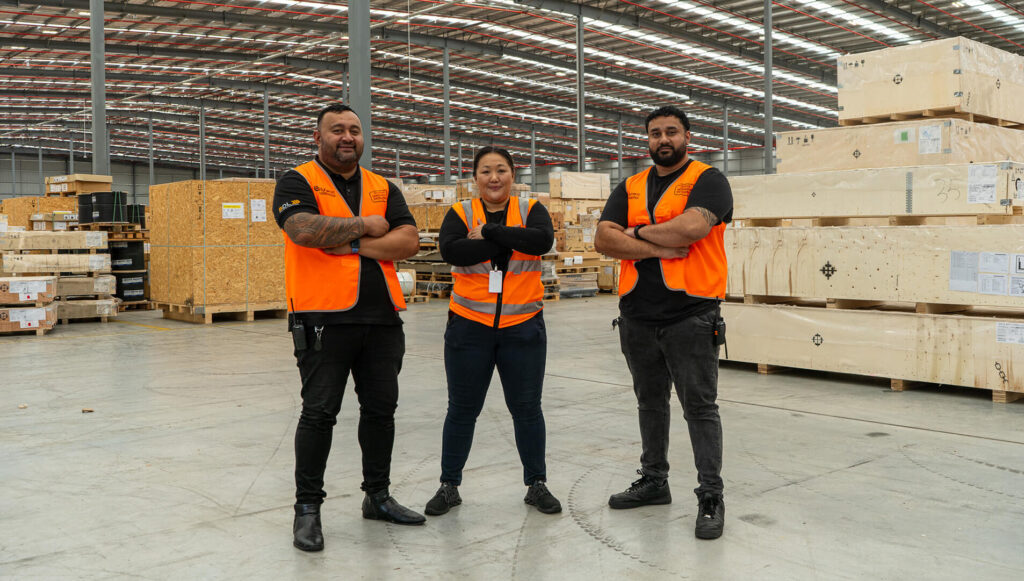
B dynamic Logistics is a trusted partner for businesses seeking smarter, more scalable logistics solutions. With a focus on innovation, flexibility, and customer-centric service, we help companies streamline their supply chains and unlock new efficiencies across warehousing, transportation, and fulfilment.
Managing logistics costs in today’s competitive market can feel like navigating a maze of unpredictable expenses and hidden charges. For Australian businesses grappling with rising freight rates, labour shortages, and the complexity of modern supply chains, the challenge of controlling logistics costs while maintaining service quality has never been more pressing. Partnering with a Third-Party Logistics (3PL) provider represents more than just outsourcing—it’s a strategic financial decision that can fundamentally transform your cost structure. By leveraging the expertise, infrastructure, and economies of scale that a specialised logistics partner brings, businesses can achieve significant cost reductions whilst simultaneously improving their operational efficiency and customer service capabilities.
Understanding the Hidden Costs in Your Supply Chain
Before exploring how a 3PL partnership delivers cost savings, it’s crucial to understand the full spectrum of expenses lurking within your supply chain. Whilst direct costs like freight charges, warehousing rent, and staff wages are readily apparent on any profit and loss statement, the indirect costs often prove far more insidious to a business’s bottom line. Consider the capital tied up in inventory holding costs, the ongoing investment required for warehouse management systems and tracking technology, the administrative overheads of managing multiple carriers and suppliers, and the less tangible but equally real costs of delivery errors that erode customer trust and retention. Additionally, businesses face the financial burden of scaling operations up or down to meet seasonal demand, often finding themselves either overstaffed during quiet periods or scrambling for resources during peaks. When managed through a fragmented, in-house approach, these operational costs tend to spiral beyond initial projections, with business owners discovering that what seemed like controllable expenses have become a significant drain on resources that could be better invested in core business growth activities.
Five Ways a 3PL Partner Slashes Operational Expenses
Optimising Warehousing and Storage Costs
The traditional model of leasing or owning warehouse space locks businesses into fixed costs regardless of actual usage, creating inefficiencies that directly impact profitability. When partnering with a 3PL that operates state-of-the-art warehousing facilities, businesses transition to a variable cost model where they pay only for the space and services they actually use, eliminating the burden of maintaining underutilised warehouse space during slower periods. This shared resource approach means multiple businesses benefit from premium infrastructure—including advanced security systems, climate control, and professional maintenance—without individual capital expenditure. The cost savings extend beyond mere square metreage, as utilities, insurance, equipment maintenance, and facility management are bundled into the service, transforming what was once a complex web of fixed overheads into a predictable, scalable operational expense that adjusts naturally with business needs.
Reducing Transportation and Freight Expenses
3PL providers command significantly better freight rates than individual businesses due to their substantial shipping volumes and established relationships with multi-carrier transportation networks. By consolidating shipments from multiple clients and employing sophisticated route optimisation algorithms, a 3PL can achieve economies of scale that would be impossible for a single business to replicate. This expertise extends to understanding the nuances of different shipping options—from standard B2C deliveries to complex B2B logistics and specialised “Big and Bulky” freight requirements—ensuring that each shipment uses the most cost-effective method without compromising delivery times. Furthermore, the ability to dynamically switch between carriers based on performance, cost, and service requirements means businesses benefit from competitive pricing and reliable service without the administrative burden of managing multiple carrier relationships.
Minimising Labour and Staffing Overheads
The true cost of maintaining an in-house logistics team extends far beyond basic wages, particularly in the Australian context where superannuation, payroll tax, workers’ compensation insurance, and compliance with complex labour regulations add substantial overheads. Training new staff, managing seasonal fluctuations in labour needs, dealing with sick leave and turnover, and the ongoing challenge of recruiting skilled warehouse workers in a tight labour market all contribute to escalating costs that many businesses underestimate. A 3PL partnership provides access to a trained, efficient workforce on-demand, eliminating these overheads whilst ensuring consistent service levels through established training programmes and operational procedures that have been refined across multiple client operations.
Leveraging Technology Without the Capital Outlay
The technological gap between what most small to medium enterprises can afford and what a technology-driven 3PL provides represents one of the most compelling arguments for outsourcing logistics operations. Implementing and maintaining a comprehensive Warehouse Management System (WMS), inventory tracking software, carrier integration tools, and customer portals requires substantial upfront investment and ongoing technical support that strain both financial and human resources. Through a 3PL partnership, businesses gain immediate access to enterprise-level systems that offer real-time tracking, seamless eCommerce platform integration, automated reporting, and predictive analytics—capabilities that would typically require hundreds of thousands of dollars to implement independently, not to mention the ongoing costs of updates, maintenance, and technical support.
Improving Inventory Management to Prevent Loss
Poor inventory management creates a cascade of costs that erode profitability: stockouts lead to lost sales and damaged customer relationships, overstocking ties up working capital and increases the risk of obsolescence, whilst shrinkage from theft or damage directly impacts the bottom line. A 3PL’s reliable integrated inventory management systems employ barcode scanning, cycle counting, and sophisticated forecasting algorithms to maintain accuracy rates that typically exceed, dramatically reducing these costly errors. This precision in inventory control, combined with professional handling procedures and secure storage facilities, minimises product damage and loss whilst providing the visibility needed for better demand planning and working capital management, ultimately freeing up cash flow for business growth initiatives.

Beyond Cost Savings: The Strategic Value of a 3PL
Whilst cost reduction often drives the initial decision to partner with a 3PL, the strategic advantages frequently prove even more valuable in the long term. By outsourcing logistics operations, business owners and their teams can redirect their focus toward core competencies—product development, marketing innovation, and customer relationship building—rather than getting bogged down in the operational minutiae of warehouse management and delivery coordination. The scalability and flexibility inherent in a 3PL relationship enable businesses to respond quickly to market opportunities, whether that’s expanding into new geographical markets, handling seasonal peaks without infrastructure investment, or testing new product lines without committing to long-term warehouse leases. Enhanced customer experience becomes a natural outcome when professional logistics management ensures fast, accurate, and reliable delivery, whilst sophisticated reverse logistics capabilities transform the traditionally problematic returns process into an opportunity to build customer loyalty. This combination of operational excellence and strategic flexibility positions businesses to compete more effectively in markets where customer expectations for delivery speed and reliability continue to escalate.
Choosing the Right 3PL Partner for Your Business
Selecting a 3PL partner requires careful evaluation beyond simple cost comparisons to ensure alignment with your business objectives and operational requirements. Specialised Experience matters significantly—ensure your potential partner understands your specific business model, whether that’s B2C eCommerce fulfilment, B2B retail distribution, or specialised Big & Bulky logistics. Technological Capability should align with your current systems and future ambitions, with seamless integration to your existing platforms and real-time visibility into operations being non-negotiable in today’s digital environment. Scalability becomes crucial as your business grows, so investigate their capacity to handle peak seasons, their geographic coverage, and their ability to add new services as your needs evolve. Transparency in pricing models, service level agreements, and communication protocols helps avoid the hidden costs and frustrations that can undermine the partnership’s value. Finally, Cultural Fit shouldn’t be underestimated—the right 3PL operates as a true extension of your team, invested in your success and aligned with your values around customer service and operational excellence. Before engaging with potential providers, prepare a comprehensive list of questions addressing these factors, along with specific scenarios relevant to your business to gauge their problem-solving approach and commitment to partnership.
Final Thoughts on Transforming Your Logistics
Partnering with a 3PL represents a fundamental shift in how businesses approach their supply chain, transforming what has traditionally been viewed as a necessary cost centre into a source of competitive advantage. The right logistics partnership delivers immediate cost reductions through economies of scale and operational efficiency, whilst simultaneously building the resilience, flexibility, and scalability necessary for long-term success in increasingly complex markets. As Australian businesses face ongoing challenges from labour shortages, rising operational costs, and escalating customer expectations, the strategic value of professional logistics management becomes ever more apparent. The question isn’t whether you can afford to partner with a 3PL, but whether you can afford not to embrace this transformation of your supply chain operations.
As a leader in third-party logistics, B dynamic Logistics empowers businesses to grow with confidence. Our tailored approach, advanced technology, and commitment to operational excellence make us the preferred choice for companies looking to elevate their logistics performance and deliver exceptional customer experiences.
Ready to see how a strategic logistics partnership can reduce your costs and fuel your growth? Contact the B dynamic team for a complimentary consultation on your supply chain needs.

Frequently Asked Questions
What is a third-party logistics (3PL) provider?
A third-party logistics provider is a specialised company that manages logistics operations on behalf of other businesses, including warehousing, inventory management, order fulfilment, and transportation services, allowing companies to outsource these complex functions to experts.
How exactly does a 3PL simplify my supply chain?
A 3PL consolidates multiple logistics functions under one partnership, providing integrated technology systems, established carrier relationships, and standardised processes that replace the complexity of managing numerous vendors, systems, and operational tasks independently.
What is the difference between 3PL and warehousing?
Whilst warehousing focuses solely on storage space, 3PL services encompass the entire logistics operation including inventory management, order processing, pick and pack services, shipping coordination, returns processing, and technology integration for complete supply chain management.
Are 3PL services suitable for a small business?
Absolutely—3PL services are particularly valuable for small businesses as they provide access to enterprise-level infrastructure, technology, and expertise without the capital investment, allowing smaller operations to compete with larger competitors on service quality and efficiency.
How do 3PLs reduce transportation costs?
3PLs leverage their shipping volume to negotiate better rates with carriers, optimise routes across multiple clients’ shipments, consolidate freight for efficiency, and maintain relationships with multiple carriers to ensure competitive pricing and service options.
What kind of technology should I expect from a modern 3PL?
Modern 3PLs offer comprehensive warehouse management systems, real-time inventory tracking, automated order processing, multi-channel integration capabilities, customer portals for shipment visibility, and advanced analytics for demand forecasting and performance monitoring.
Can a 3PL help with eCommerce order fulfilment?
Yes, eCommerce fulfilment is a core competency for many 3PLs, offering same-day order processing, multi-marketplace integration, automated inventory synchronisation, custom packaging options, and scalable solutions for peak trading periods.
How does outsourcing logistics help my business scale?
Outsourcing provides immediate access to expandable warehouse space, trained labour, and established processes without capital investment, enabling rapid scaling for seasonal peaks, geographic expansion, or business growth without the risks of fixed infrastructure commitments.
What are the main benefits of outsourcing logistics?
Key benefits include reduced operational costs, access to expertise and technology, improved service quality, enhanced scalability, reduced capital requirements, risk mitigation, and the ability to focus internal resources on core business activities.
How do I measure the ROI of using a 3PL partner?
Calculate ROI by comparing total logistics costs before and after implementation, including hidden costs like labour management and technology, whilst also measuring improvements in order accuracy, delivery speed, customer satisfaction scores, and the value of freed-up capital and management time.
At B dynamic Logistics, we pride ourselves on delivering innovative and reliable supply chain solutions tailored to your business needs.
Back to Blog